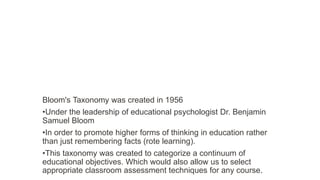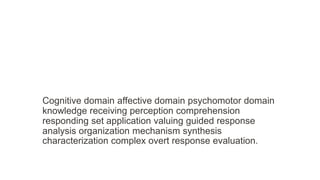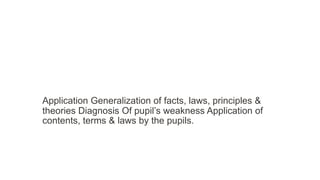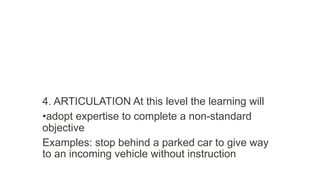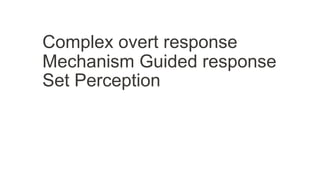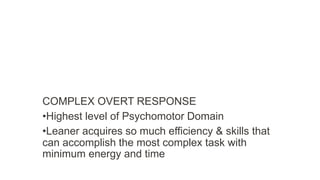Bloom's Taxonomy was created in 1956 by educational psychologist Benjamin Bloom to promote higher forms of thinking in education beyond rote memorization. It categorizes educational goals according to their complexity, from basic recall to evaluation and creativity. The taxonomy divides educational objectives into three domains: Cognitive (knowledge and intellectual skills), Affective (growth in feelings, attitudes, and values), and Psychomotor (physical skills). Each domain contains hierarchical levels of objectives, from basic to complex. Bloom's Taxonomy provides a framework to set appropriate learning goals and assess student comprehension.


